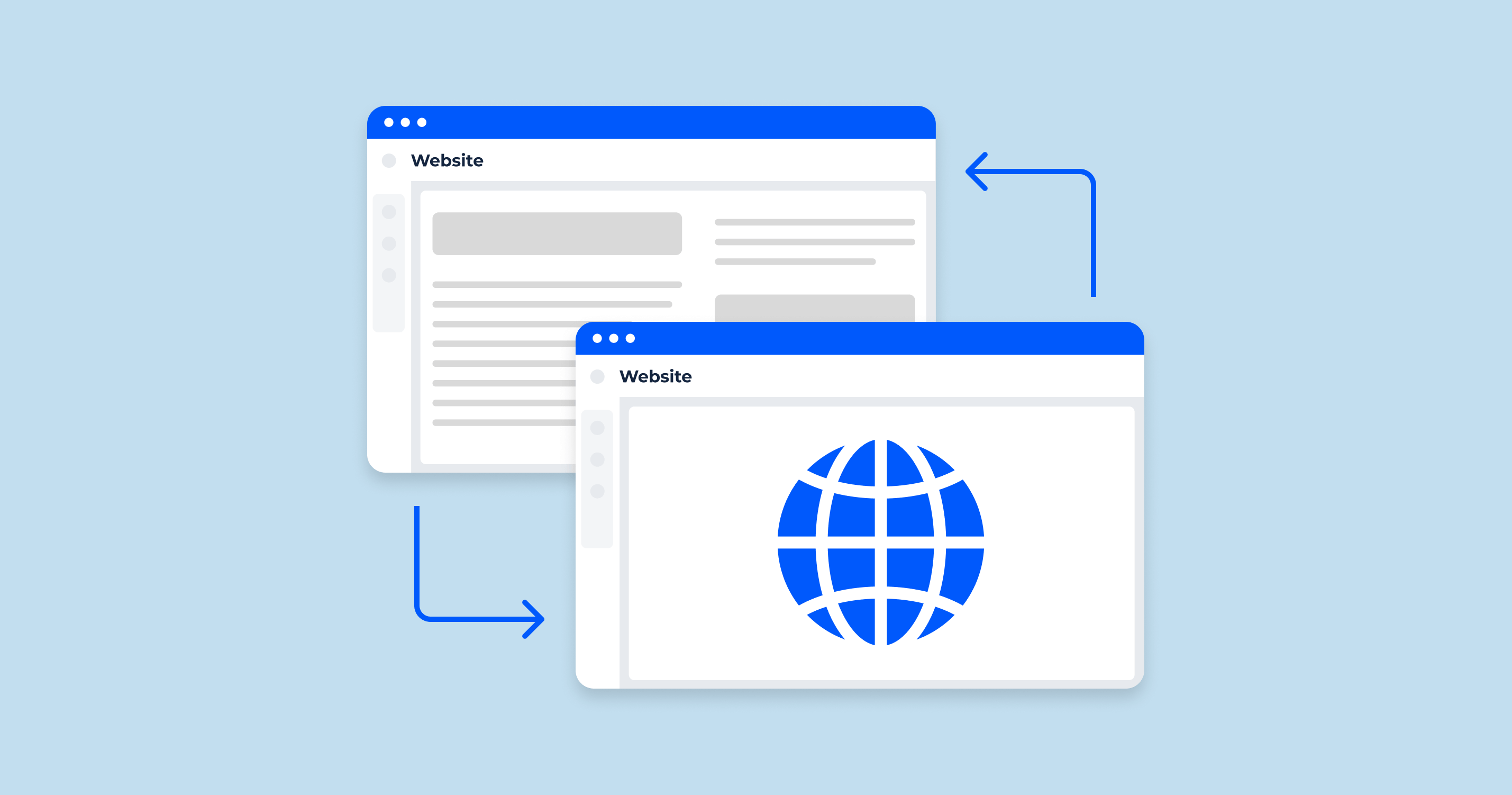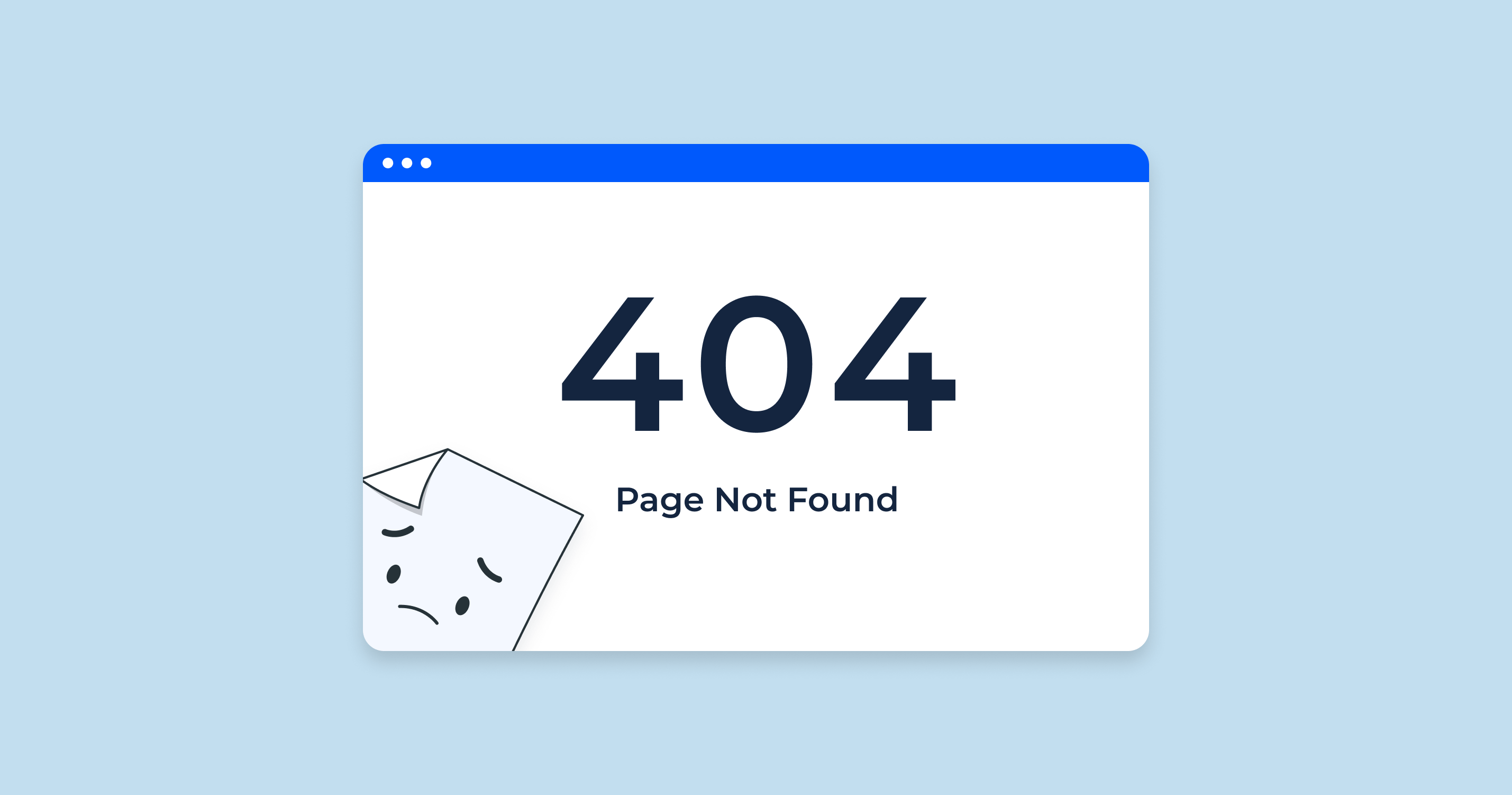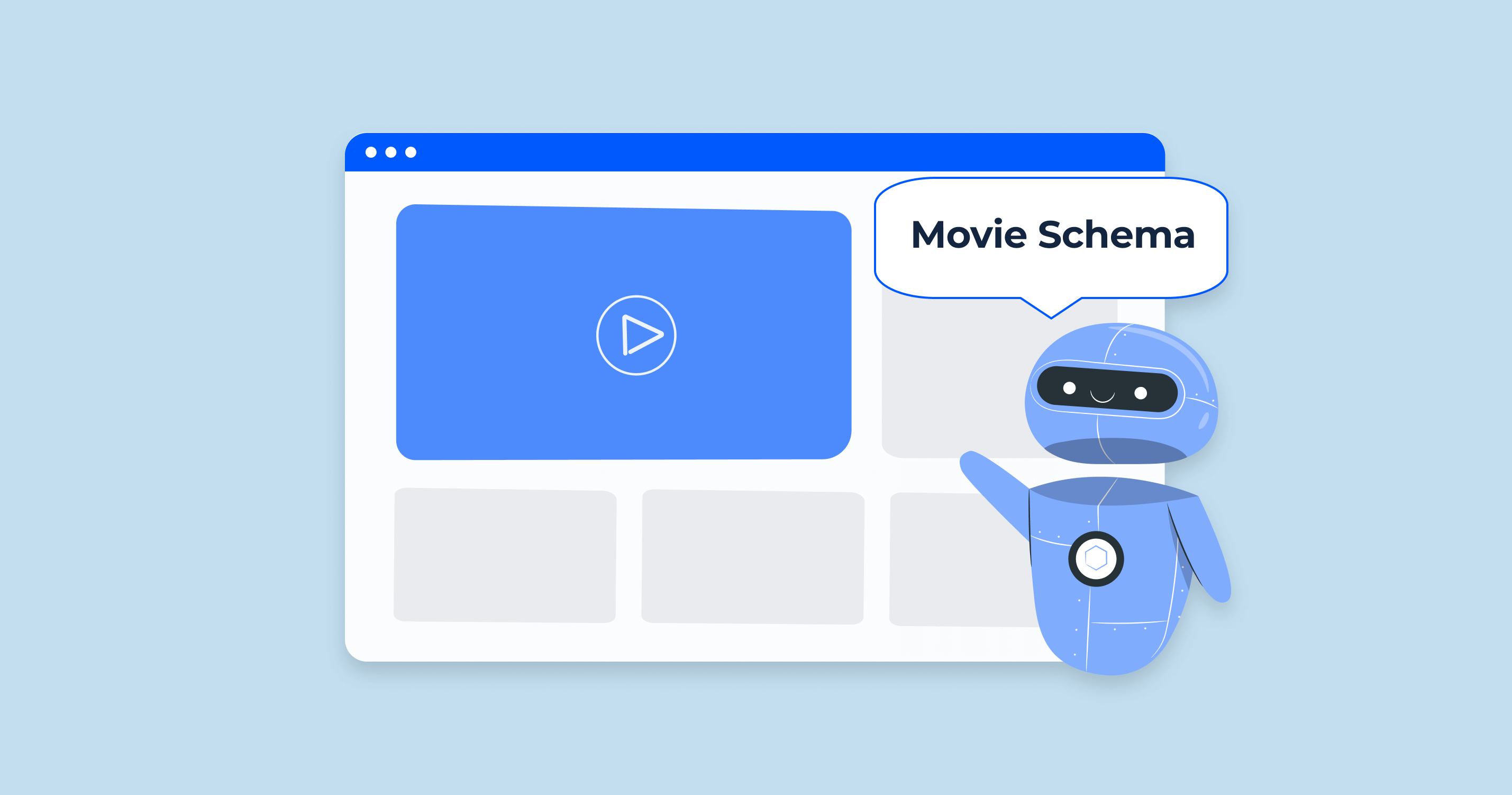Website traffic sources are the means through which people find your website and land on it. There are six primary website traffic sources: organic, email, direct, social media, referral, and paid traffic. These sources for websites can also be divided into two main categories: free and paid.
- Organic traffic is the visitors that come to your website from search engines such as Google or Bing.
- Email traffic is the visitors that come to your website from email marketing campaigns.
- Direct traffic is the visitors that come to your website by typing your URL directly into their browser.
- Social media traffic is the visitors that come to your website from social media platforms such as Facebook or Twitter.
- Referral traffic is the visitors that come to your website from other websites that link to you.
- Paid traffic is the visitors that come to your website from paid advertising campaigns.
Driving Traffic via Search Engine Optimization (SEO) and Search Engine Marketing (SEM)
SEO is a methodology of strategies, techniques, and tactics used to increase the visibility of a website in search engine results, thereby driving more organic visitors to the site. This involves various on-page and off-page techniques such as keyword optimization, creating high-quality and relevant content, improving site speed and mobile-friendliness, using SEO-friendly URLs, securing your website with HTTPS, and acquiring high-quality backlinks, among others.
On the other hand, SEM encompasses SEO and also includes paid search activities. It is a form of Internet marketing that promotes websites by increasing their visibility in search engine results pages (SERPs) primarily through paid advertising. Paid search advertising platforms like Google Ads and Bing Ads allow businesses to bid on keywords that are relevant to their products or services. These ads then appear at the top or bottom of the SERPs, which can significantly boost website traffic. Pay-per-click (PPC) advertising, a model of SEM, ensures that you only pay when someone actually clicks on your ad.
While SEO focuses on earning traffic organically and improving a website’s rank over time, SEM delivers immediate results by placing your website in front of potential customers right away.
For an effective search marketing strategy, it’s usually beneficial to utilize both SEO and SEM, balancing the long-term benefits of SEO with the immediate visibility provided by SEM.
Methods to Propel Visitors to Your Website
Driving visitors to your website can be achieved through a variety of methods. One way is through search engine optimization (SEO), where you optimize your website’s content and design to improve its visibility in search engine results.
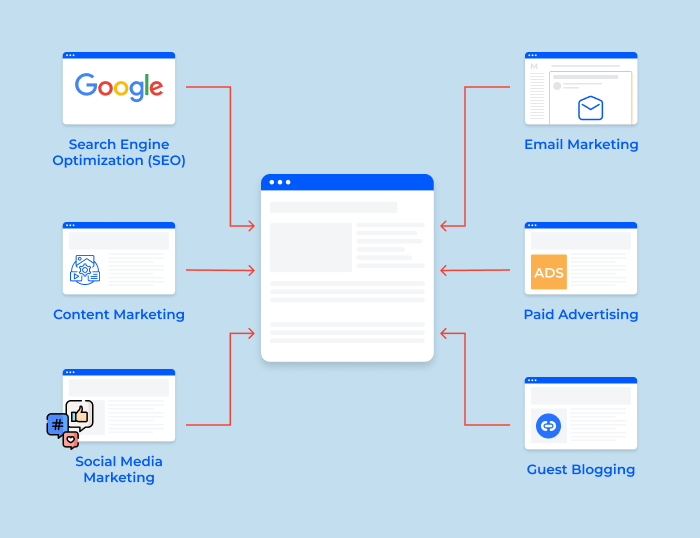
Content marketing is another strategy that involves creating high-quality, engaging content that appeals to your audience and encourages them to visit your website.
Social media marketing and email marketing are other key strategies; these involve using social media platforms and email campaigns respectively to promote your content and connect with your subscribers.
Paid advertising, such as Google Ads or social media advertising, can also be an effective way to drive targeted traffic to your website.
Collaborating with influencers and other businesses in your industry can also help expand your reach and drive more visitors to your site.
Guest blogging, video marketing, and online networking can further enhance your website’s visibility and draw in more visitors.
Hosting webinars and live streams or employing search engine marketing tactics like pay-per-click (PPC) advertising can also attract visitors.
The ultimate goal is not just to increase the number of visitors, but also to enhance the quality, drawing in visitors who are genuinely interested in your products or services and are likely to convert into customers.
Common Reasons Why a Website May Not be Receiving Much Traffic
There are several common reasons why a website may not be receiving much traffic, and for each of these issues, there are solutions that can help improve your site’s visibility and visitor numbers.
1. Poor SEO
If your website isn’t optimized for search engines, it may be ranked low in search results, resulting in less organic visitors.
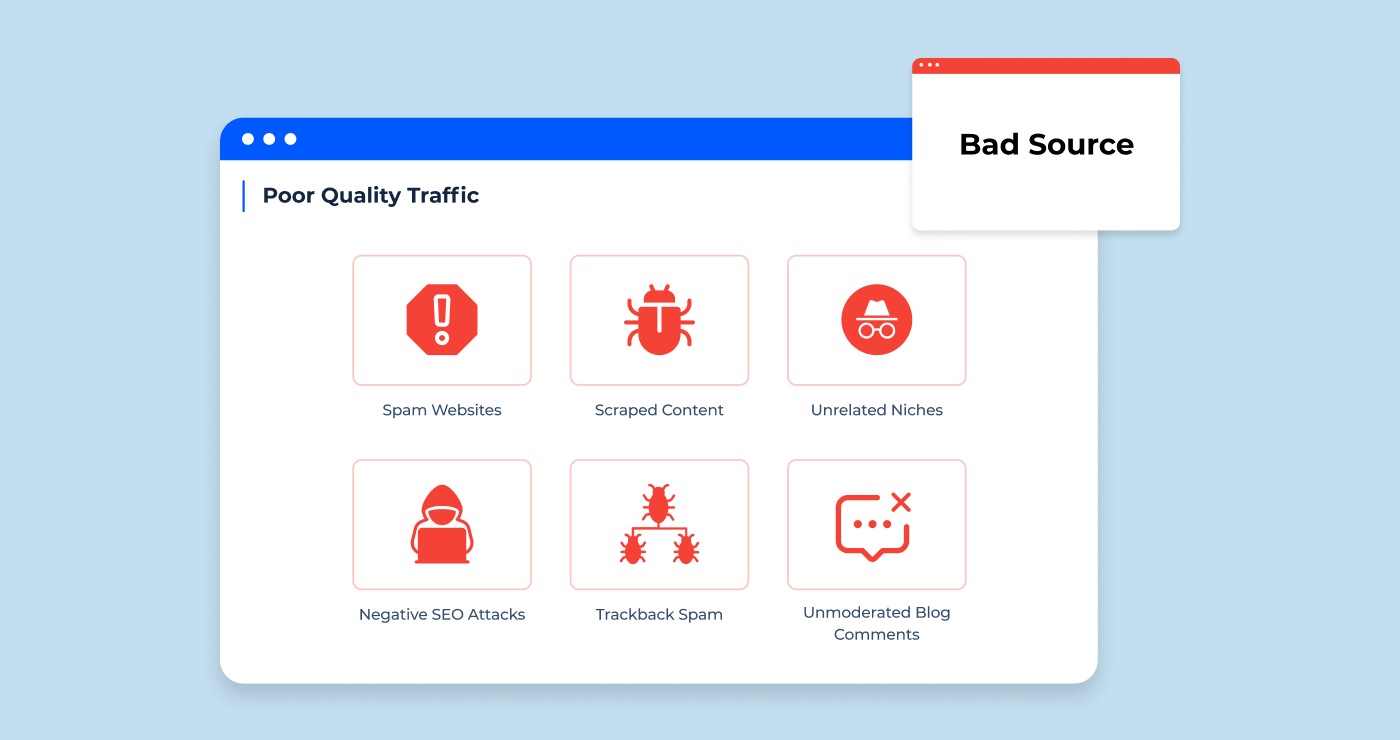
Solution: Implement SEO best practices, such as keyword optimization, quality content creation, and backlink building. Ensure your website has a clear, easy-to-navigate layout, is mobile-friendly, and has fast loading times.
2. Low-Quality Content
If your content isn’t useful, engaging, or relevant to your audience, visitors may not stick around or return.
Solution: Regularly create and publish high-quality content that resonates with your target audience and addresses their needs or questions. A blog is a great way to do this.
3. Weak Online Presence
If your site is new or if you’re not active online, people may not know your site exists.
Solution: Be active on social media platforms, participate in relevant forums, start an email marketing campaign, and consider running online ads to increase your site’s visibility.
4. Inadequate Keyword Strategy
If you’re not using the right keywords, or not using them properly, you could be missing out on potential visitors from search engines.
Solution: Conduct keyword research to understand what terms your target audience is using to search for your products or services. Once you’ve identified these, incorporate them into your website’s content and meta tags.
5. No Backlinks
Backlinks from other sites can greatly improve your website’s traffic, as they increase your site’s authority and visibility in search engine results.
Solution: Create a backlink strategy. This might involve reaching out to other sites for guest posting opportunities, creating shareable content, or building relationships with influencers in your industry.
6. Lack of User Engagement
If users aren’t engaging with your site, they may leave quickly, reducing your website traffic over time.
Solution: Encourage engagement by integrating interactive elements into your site, like comment sections, quizzes, or surveys. Also, be responsive and engage with your users whenever they leave comments or ask questions.
7. Poor User Experience
If your website is hard to navigate, has a poor design, or is slow to load, visitors might leave and not return.
Solution: Invest in a good web design that is aesthetically pleasing, easy to navigate, and quick to load. Make sure your website is mobile-friendly as well, as a large portion of web traffic comes from mobile devices.
Each of these solutions involves time and effort, but they’re crucial to increasing your website’s traffic and ensuring your online business’s success.
Sitechecker Pro Traffic Checker for Managing Website Traffic
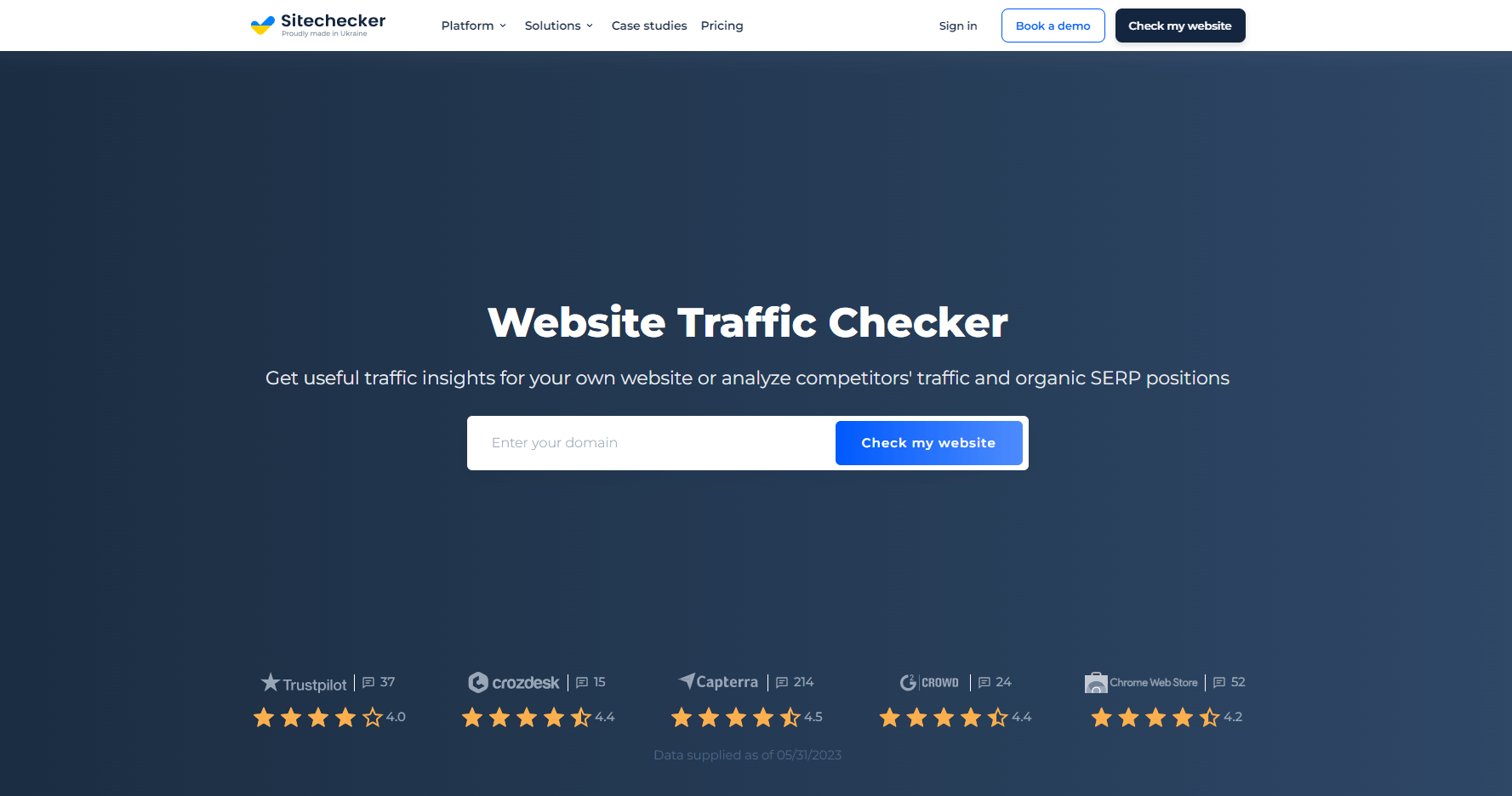
The Sitechecker Pro Traffic Checker is a valuable tool that offers numerous insights to help you manage and boost your website’s traffic. It delivers comprehensive data about your site’s users, including the number of visitors, page views, average session duration, and bounce rate.
This tool also offers insights into your audience’s demographics, such as location, language, and devices used, enabling you to understand your audience better and cater to their needs more effectively.
Additionally, it evaluates your site’s SEO performance by revealing your top organic keywords, organic search traffic, and top referral sites. These insights can be useful in enhancing your SEO strategy.
Notably, the Traffic Checker also lets you check other data, which can be instrumental in understanding your competition and strategies. It helps track changes in your traffic over time, allowing you to assess the effects of any alterations you make to your site or marketing approach.
Moreover, it provides data on visitors from various social media platforms, helping you identify which platforms are bringing in the most visitors to your site and where you should concentrate your social media marketing efforts.
Conclusion
Website traffic, crucial for gauging a site’s popularity and effectiveness, comprises various sources, including organic, email, direct, social media, referral, and paid traffic. These channels provide insight into user behavior and inform marketing strategies.
Tools such as SEO and SEM play vital roles in driving organic and paid traffic, respectively, often used in combination for optimal visibility. Beyond these, content and social media marketing, email campaigns, paid advertising, collaborations, guest blogging, video marketing, and online networking serve as effective methods to propel visitors to a site.
However, it’s important to understand that challenges such as poor SEO, low-quality content, weak online presence, inadequate keyword strategy, lack of backlinks, low user engagement, and poor user experience can affect traffic. Addressing these challenges is pivotal to enhance site visibility and traffic.
Tools like Sitechecker Pro Traffic Checker offer valuable insights into your website’s performance, audience demographics, and SEO metrics, facilitating effective traffic management and growth.
